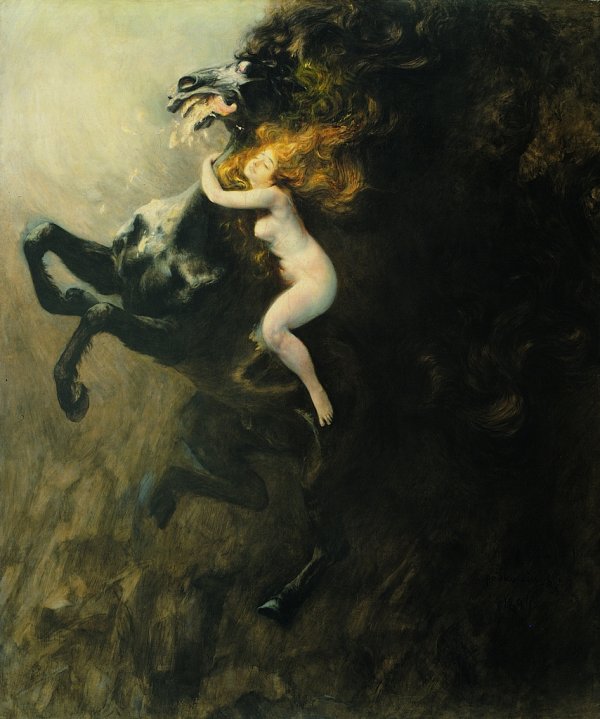Facts About Szał (Frenzy)
"Frenzy of Exultations" often simply referred to as "Frenzy" is a mesmerizing painting created in 1893 by Polish artist Władysław Podkowiński. This piece is one of his most celebrated works and is acclaimed as the first symbolist painting in Polish art, a significant achievement during a period when Poland was partitioned among Russia, Germany, and Austria.
The painting depicts a dramatic scene featuring a nude, red-haired woman riding a wild black horse. The horse is rendered with striking details: bared teeth, a lolling tongue, flared nostrils, and a foaming mouth. The woman, her eyes closed, clings to the horse's neck, her loose hair streaming upwards and merging with the horse’s mane. Podkowiński employed a limited color palette of blacks, browns, and grays contrasted with white and yellow, creating a powerful interplay between light and darkness.
The concept for "Frenzy" originated during Podkowiński’s stay in Paris in 1889. However, it was his personal struggles and unrequited love that propelled him to complete the intense final version in 1893. The painting underwent several sketches and studies, ultimately presenting a dramatic contrast between light and shadow, mirroring the artist’s inner turmoil and deteriorating health.
When "Frenzy" was exhibited in Warsaw in 1894, it elicited considerable attention. Despite the interest, Podkowiński was unable to sell it at his desired price. Tragically, 36 days into the exhibition, Podkowiński slashed the painting with a knife. The motives behind this act remain ambiguous, leading to much speculation about his mental condition and the possibility of an unreciprocated love for a woman who may have inspired the piece.
After Podkowiński’s death, the painting was meticulously restored. It was eventually obtained by Feliks Jasieński, who donated it to the National Museum in Kraków in 1904. The turbulent history of "Frenzy of Exultations" echoes the artist’s own struggles and vision, securing its place as a seminal work in Polish art history.

 Germany
Germany